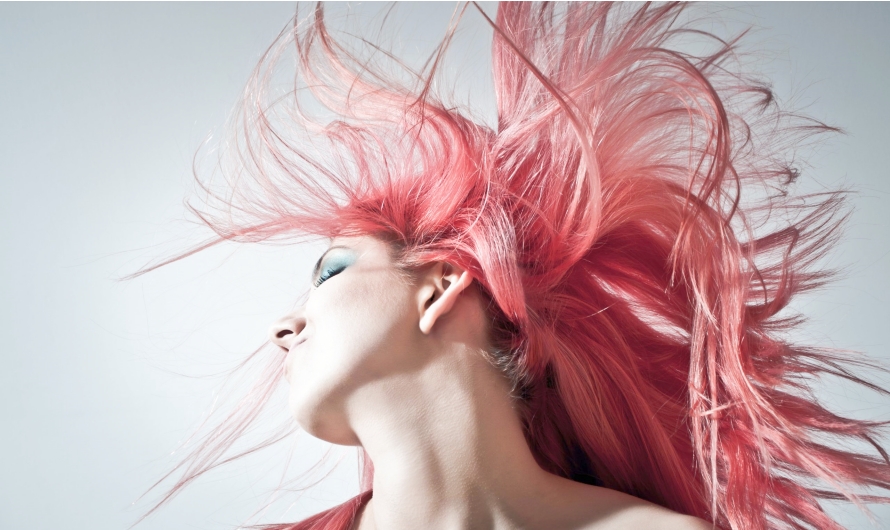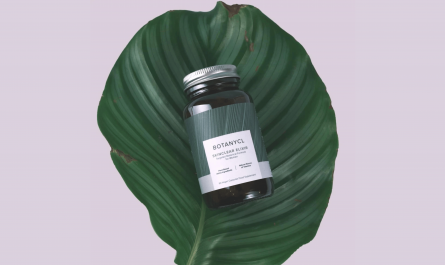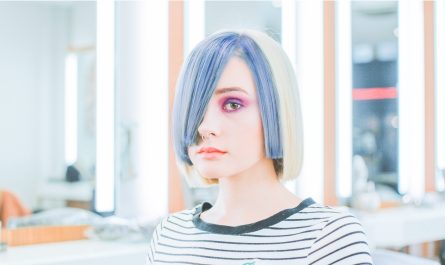Coloring your hair at home can be a fun and rewarding experience, as you can save money, time, and hassle, and express your creativity and personality. However, coloring your hair at home can also be a risky and challenging task, as you can end up with unwanted results, such as uneven color, too dark or too light color, brassy or greenish tones, dry or damaged hair, etc. Therefore, it is important to know how to color your hair at home safely and effectively, and how to avoid common mistakes that can ruin your hair.
In this article, we will show you how to choose the right hair color for your skin tone and hair type, how to prepare your hair and tools for coloring, how to apply the hair color step by step, how to fix common hair color mistakes, and how to maintain your hair color and keep it healthy. We hope you will find this article useful and engaging, and that you will be able to color your hair at home with confidence.
How to Choose the Right Hair Color for Your Skin Tone and Hair Type
One of the most important steps in coloring your hair at home is choosing the right hair color for your skin tone and hair type. The right hair color can enhance your natural beauty, complement your features, and make you look more radiant and attractive. The wrong hair color can clash with your skin tone, wash out your complexion, and make you look dull and unflattering.
To choose the right hair color for your skin tone and hair type, you need to determine two things: your skin tone and your hair type.
Your skin tone is the undertone of your skin, which can be warm, cool, or neutral. Your skin tone is not the same as your skin color, which can change depending on the season, sun exposure, or makeup. Your skin tone is determined by the amount of melanin (pigment) in your skin, and it stays the same throughout your life.
To determine your skin tone, you can use one of these methods:
- Look at the veins on your wrist. If they are blue or purple,
you have a cool skin tone. If they are green or olive,
you have a warm skin tone. If they are a mix of both,
you have a neutral skin tone. - Hold a piece of white paper next to your face in natural light.
If your skin looks pink or rosy,
you have a cool skin tone. If your skin looks yellow or golden,
you have a warm skin tone. If your skin looks neither pink nor yellow,
you have a neutral skin tone. - Try on some jewelry in silver and gold. If silver looks better on you,
you have a cool skin tone. If gold looks better on you,
you have a warm skin tone. If both look equally good on you,
you have a neutral skin tone.
Once you know your skin tone, you can choose a hair color that suits it best. Here are some general guidelines on how to choose a hair color based on your skin tone:
- Cool Skin Tone: You can choose cool or neutral colors that have blue,
violet, or ash undertones, such as platinum blonde,
ash brown,
burgundy,
or black. - Warm Skin Tone: You can choose warm or neutral colors that have red,
orange, or gold undertones, such as honey blonde,
caramel brown,
copper,
or chestnut. - Neutral Skin Tone: You can choose any color that matches your personal preference and style, as you can pull off both cool and warm colors. However, you may want to avoid colors that are too extreme or contrasting, such as very light or very dark colors, as they can make your skin look washed out or unnatural.
Your hair type is the texture and condition of your hair, which can be straight, wavy, curly, or coily, and fine, medium, or thick. Your hair type can affect how your hair absorbs and reflects the hair color, and how long it lasts.
To determine your hair type, you can use one of these methods:
- Look at a strand of your hair. If it is straight and thin,
you have fine straight hair. If it is straight and thick,
you have thick straight hair. If it is wavy and thin,
you have fine wavy hair. If it is wavy and thick,
you have thick wavy hair. If it is curly and thin,
you have fine curly hair. If it is curly and thick,
you have thick curly hair. If it is coily and thin,
you have fine coily hair. If it is coily and thick,
you have thick coily hair. - Wrap a strand of your hair around your finger. If it wraps around more than once,
you have fine hair. If it wraps around once,
you have medium hair. If it does not wrap around at all,
you have thick hair. - Pull a strand of your hair gently. If it breaks easily,
you have fine hair. If it stretches slightly before breaking,
you have medium hair. If it does not break at all,
you have thick hair.
Once you know your hair type, you can choose a hair color that suits it best. Here are some general guidelines on how to choose a hair color based on your hair type:
- Fine Hair: You can choose lighter or darker colors that add some depth and dimension to your hair, such as highlights, lowlights, balayage, or ombre. You can also choose colors that have some shine or gloss to them, such as metallics, pearls, or pastels. You may want to avoid colors that are too flat or dull, such as mattes, ashes, or neutrals.
- Medium Hair: You can choose any color that matches your personal preference and style, as you have the most versatile hair type for coloring. You can also experiment with different techniques and effects, such as gradients, melts, or splashes. You may want to avoid colors that are too harsh or contrasting, such as stripes, blocks, or patches.
- Thick Hair: You can choose darker or richer colors that add some warmth and vibrancy to your hair, such as browns, reds, oranges, or yellows. You can also choose colors that have some texture or movement to them, such as curls, waves, or braids. You may want to avoid colors that are too light or cool, such as blondes, blues, greens, or purples.
How to Prepare Your Hair and Tools for Coloring
Before you color your hair at home, you need to prepare your hair and tools for coloring. This will ensure that you get the best results and avoid any damage or mess.
Here are some steps to prepare your hair and tools for coloring:
- Wash your hair 24 to 48 hours before coloring, using a clarifying shampoo that removes any dirt, oil, or product buildup from your hair. This will help your hair absorb and retain the color better. Do not use a conditioner or a mask after washing, as this can create a barrier that prevents the color from penetrating your hair.
- Dry your hair completely before coloring, using a towel or a blow dryer on a low or medium heat setting. Do not use any styling products or tools on your hair, as this can alter the color or damage your hair. Your hair should be clean, dry, and natural before coloring.
- Protect your hair from damage by applying a leave-in conditioner or a heat protectant spray on your hair, focusing on the ends and the most damaged areas. This will help moisturize and strengthen your hair, and prevent it from drying out or breaking during the coloring process.
- Protect your skin, clothes, and furniture from staining by applying a thin layer of petroleum jelly or a moisturizer on your hairline, ears, neck, and shoulders. This will create a barrier that prevents the color from staining your skin. You can also wear an old shirt or a cape that covers your shoulders and chest, and lay some newspapers or towels on the floor and the surfaces where you will be coloring your hair. This will prevent the color from staining your clothes or furniture.
- Gather all the tools and products you need for coloring, such as gloves, clips, brushes, bowls, towels, etc. You can use the tools and products that come with the hair color kit, or buy them separately from a beauty supply store or online. Make sure you have enough of everything for your hair length and thickness, and that they are clean and ready to use.
- Read the instructions on the package carefully, and follow them exactly. Do not skip any steps or modify any measurements, as this can affect the outcome of the color. You can also do a strand test and a patch test before coloring your whole head, to check how the color looks on your hair and how your skin reacts to it.
How to Apply the Hair Color Step by Step
Once you have prepared your hair and tools for coloring, you can apply the hair color step by step. This will ensure that you get an even and consistent color throughout your hair.
Here are some steps to apply the hair color step by step:
- Put on the gloves and open the package. You will find two bottles: one with the color cream and one with the developer. The color cream is the pigment that colors your hair, and the developer is the liquid that activates the color and helps it penetrate your hair. You will also find an applicator nozzle that you can attach to the developer bottle.
- Mix the color cream and the developer in the developer bottle, according to the instructions on the package. Shake the bottle well until the mixture is smooth and uniform. Do not mix more than you need, as you cannot reuse or store the leftover mixture.
- Divide your hair into four sections: front left, front right, back left, and back right. Use the clips to secure each section. This will make it easier to apply the color evenly and avoid missing any spots.
- Start with the section that has the most gray or resistant hair, usually the front or the back. Apply the color mixture to your roots first, using the applicator nozzle or a brush. Work in small sections, about half an inch wide, and squeeze or brush the color onto your scalp and hair. Make sure you cover all your roots thoroughly, but do not overlap with your existing color if you are doing a touch-up.
- Move on to the next section, and repeat the same process until you have covered all your roots. You can use a mirror or ask someone to help you check for any missed spots. If you have any color mixture left, you can apply it to the rest of your hair, starting from the ends and working your way up. This will refresh your color and add some shine and dimension to your hair.
- Leave the color on your hair for the recommended time, usually between 20 to 45 minutes, depending on your hair type and desired result. Do not leave it on for longer than instructed, as this can damage your hair or cause unwanted results. You can use a timer or a clock to keep track of the time.
- Rinse your hair with warm water until the water runs clear. Do not use shampoo or conditioner, as this can strip away the color or alter its tone. You can use a color-safe conditioner or a mask that comes with the hair color kit, or buy one separately from a beauty supply store or online. This will help seal in the color and moisturize your hair.
- Dry your hair gently with a towel or a blow dryer on a low or medium heat setting. Do not rub or pull your hair too hard, as this can cause breakage or frizz. You can also use a heat protectant spray or a serum to add some shine and smoothness to your hair.
- Style your hair as usual, using tools and products that are suitable for colored hair. Avoid using tools or products that are too hot,
too cold, too harsh, or too heavy on your hair, as this can damage or fade your color.
How to Fix Common Hair Color Mistakes
Coloring your hair at home can sometimes result in some common hair color mistakes, such as uneven color, too dark or too light color, brassy or greenish tones, dry or damaged hair, etc. These mistakes can happen due to various reasons,such as choosing the wrong color, applying the color incorrectly, leaving the color on for too long or too short, using the wrong products or tools, etc. However, these mistakes are not permanent or irreversible, and you can fix them with some solutions.
Here are some steps to fix some common hair color mistakes:
- Uneven Color: If your color is uneven or patchy, you can try to even it out by applying a darker or lighter color over it, depending on whether you want to go darker or lighter. You can also use a toner or a gloss that matches your desired color, and apply it to your hair to blend and balance the color. Alternatively, you can use a color remover or a bleach to strip away the unwanted color, and then apply a new color over it. However, these methods can be harsh and damaging to your hair, so you may want to consult a professional hairstylist before trying them.
- Too Dark or Too Light Color: If your color is too dark or too light for your liking, you can try to adjust it by applying a lighter or darker color over it, depending on whether you want to go lighter or darker. You can also use a toner or a gloss that matches your desired color, and apply it to your hair to change and enhance the color. Alternatively, you can use a color remover or a bleach to strip away the unwanted color, and then apply a new color over it. However, these methods can be harsh and damaging to your hair, so you may want to consult a professional hairstylist before trying them.
- Brassy or Greenish Tones: If your color has brassy or greenish tones that you don’t like, you can try to neutralize them by using a toner or a shampoo that has the opposite color on the color wheel. For example, if your color is brassy (orange or yellow), you can use a toner or a shampoo that is purple or blue. If your color is greenish (green or blue), you can use a toner or a shampoo that is red or pink. You can also use a vinegar rinse or a lemon juice rinse to remove some of the brassiness or greenness from your hair.
- Dry or Damaged Hair: If your hair is dry or damaged from coloring, you can try to restore its health and moisture by using a deep conditioner or a mask that is specially formulated for colored hair. You can also use oils, serums, creams, or sprays that nourish and protect your hair. You may want to avoid heat styling, sun exposure, chlorine, etc., as these can further dry out or damage your hair. You may also want to trim your hair regularly to get rid of any split ends or breakage.
How to Maintain Your Hair Color and Keep It Healthy
After you have colored your hair at home and fixed any mistakes, you need to maintain your hair color and keep it healthy. This will ensure that your color lasts longer and looks better, and that your hair stays strong and shiny.
Here are some steps to maintain your hair color and keep it healthy:
- Wash your hair less frequently, using lukewarm water and a shampoo and conditioner that are designed for colored hair. This will help prevent your color from fading or changing due to washing. You can also use dry shampoo in between washes to keep your hair fresh and clean.
- Use products that are suitable for colored hair,such as masks, oils, serums, creams, or sprays that moisturize and protect your hair. You can also use toners, glosses, or shampoos that refresh and enhance your color. You may want to avoid products that contain sulfates, parabens, alcohol, or ammonia, as these can strip away or alter your color.
- Protect your hair from heat, sun, chlorine, etc., as these can damage or fade your color. You can use heat protectant sprays or serums before using any heat styling tools, such as blow dryers, curling irons, or flat irons. You can also use hats, scarves, or sunscreen to shield your hair from the sun. You can also wet your hair and apply a conditioner before swimming in a pool or the ocean, and rinse your hair with fresh water afterwards.
- Touch up your roots every 4 to 6 weeks, using the same color or a similar color that matches your existing color. You can also use root concealers or powders that temporarily cover your roots until you color them again. You may want to avoid touching up your whole head too often, as this can damage or overload your hair with color.
- Visit a professional hairstylist every 3 to 6 months, for a consultation, a trim, or a color correction. A professional hairstylist can help you check the condition and appearance of your hair and color, and give you some advice and tips on how to improve them. They can also help you fix any mistakes or problems that you may have with your hair or color.
Conclusion
Coloring your hair at home can be a fun and rewarding experience, as you can save money, time, and hassle, and express your creativity and personality. However, coloring your hair at home can also be a risky and challenging task, as you can end up with unwanted results, such as uneven color, too dark or too light color, brassy or greenish tones, dry or damaged hair, etc. Therefore, it is important to know how to color your hair at home safely and effectively, and how to avoid common mistakes that can ruin your hair.
In this article, we have shown you how to choose the right hair color for your skin tone and hair type,
how to prepare your hair and tools for coloring,
how to apply the hair color step by step,
how to fix common hair color mistakes,
and how to maintain your hair color and keep it healthy.
We hope you have found this article useful and engaging,
and that you will be able to color your hair at home with confidence.
FAQs
Here are some frequently asked questions related to the topic of this article,
along with brief answers:
- Q: How long does hair color last?
- A: It depends on the type and quality of the hair color,
the condition and texture of your hair,
and how you care for your hair.
Generally,
permanent hair color lasts until it grows out or fades,
semi-permanent hair color lasts for 4 to 6 weeks,
and temporary hair color lasts for 1 to 2 washes. - Q: How do I know if a hair color suits me?
- A: You can use one of these methods to find out if a hair color suits you:
- Use a virtual try-on app or website that allows you to upload a photo of yourself and see how different colors look on you.
- Use a wig or a clip-in extension that matches the color you want to try,
and wear it on your head. - Use a temporary or washable spray or dye that colors your hair for a short time,
and wash it off when you are done. - Q: How do I prevent my hair from getting damaged from coloring?
- A: You can use one of these methods to prevent your hair from getting damaged from coloring:
- Choose a gentle and natural hair color that does not contain harsh chemicals,
such as ammonia,
peroxide,
or bleach. - Use a deep conditioner or a mask before and after coloring,
to moisturize and strengthen your hair. - Avoid coloring your hair too often or too drastically,
as this can overload or weaken your hair. - Q: How do I make my hair color last longer?
- A: You can use one of these methods to make your hair color last longer:
- Wash your hair less frequently and with lukewarm water,using a shampoo and conditioner that are designed for colored hair.
- Use products that are suitable for colored hair,such as masks,oilsserums,creams,or sprays that moisturize and protect your hair.
- Protect your hair from heat, sun, chlorine, etc.,
as these can damage or fade your color. - Touch up your roots every 4 to 6 weeks,
using the same color or a similar color that matches your existing color. - Q: How do I change my hair color if I don’t like it?
- A: You can use one of these methods to change your hair color if you don’t like it:
- Apply a lighter or darker color over it,
depending on whether you want to go lighter or darker. - Use a toner or a gloss that matches your desired color,
and apply it to your hair to change and enhance the color. - Use a color remover or a bleach to strip away the unwanted color,
and then apply a new color over it. - Visit a professional hairstylist for a consultation, a trim, or a color correction.




